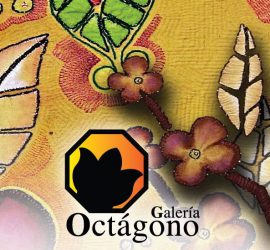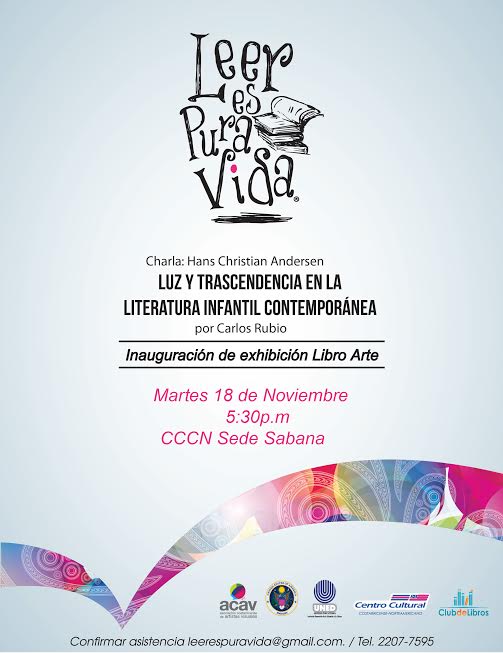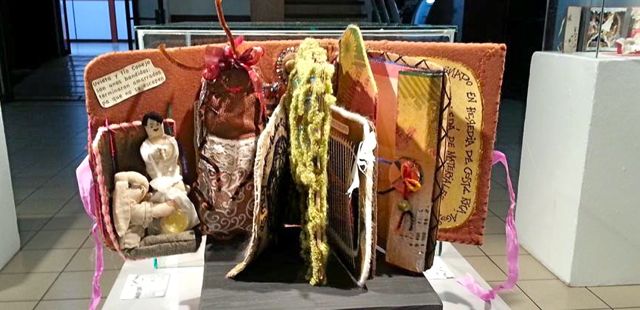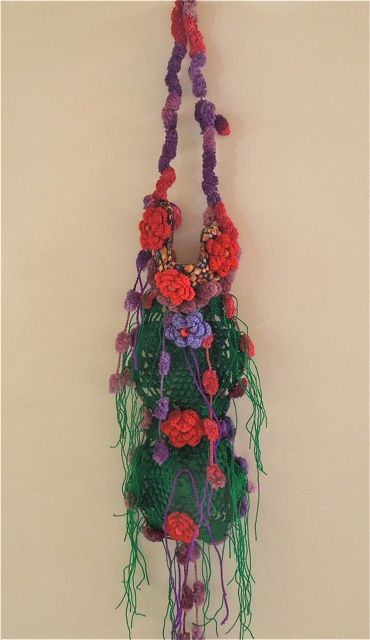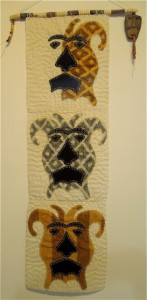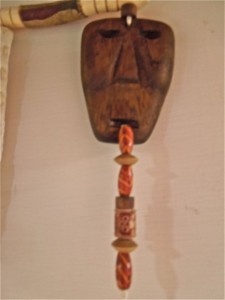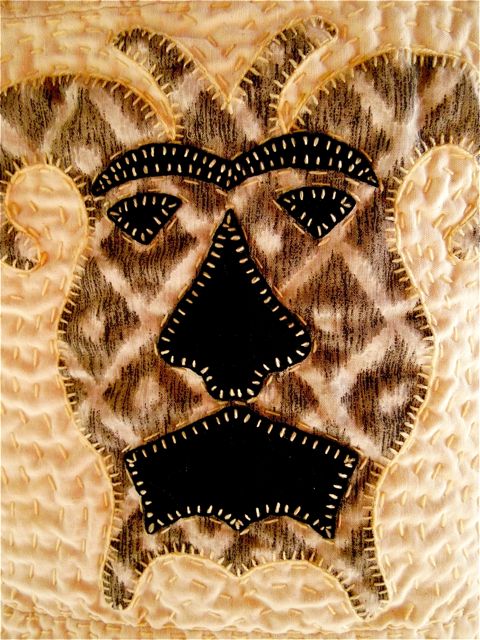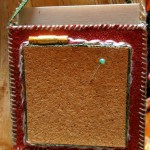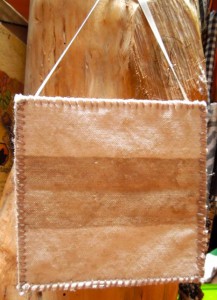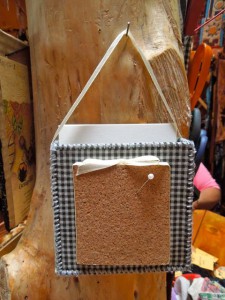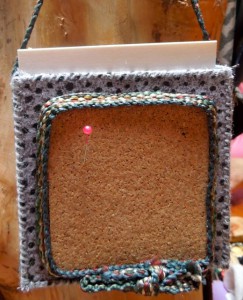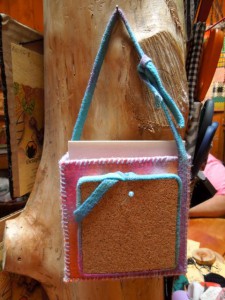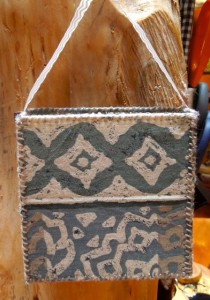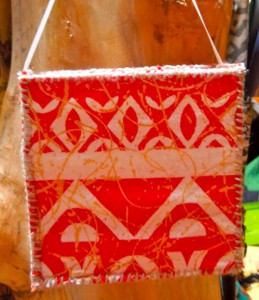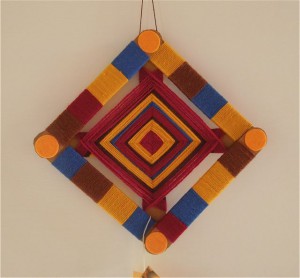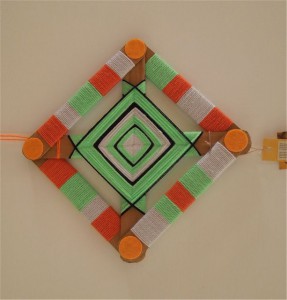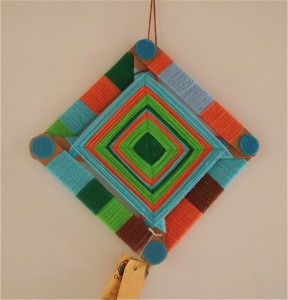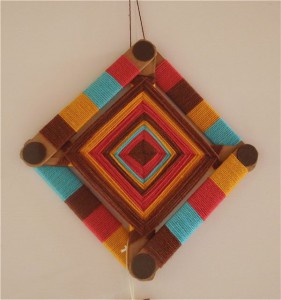PUBLICACION: El auge del textil y su bella fusión mundial
El auge del textil y su bella fusión mundial
Han pasado unos 130 años de historia textil desde que William Morris nos brindara su movimiento Arts and Crafts, el cual ha continuado aportando posibilidades de expansión a casi todas las artes decorativas y, a través de las mismas, ha llegado a acogerse a las bellas artes. El legado de Morris no es solamente en términos de diseño textil y múltiples habilidades artístico-artesanales, sino que también abraza la fusión de todo talento como herramienta o técnica artesanal hacia una expresión propia y meramente expresiva. Por lo tanto, cada vez que el arte textil ha decaído por alguna razón de índole económica, ha logrado salvarse gracias a un resurgir de la filosofía parecida a la implementada por Morris en los años 1880.
En tiempo presente, sentimos que la crisis económica mundial de los últimos años es acompañada por un cierto temor de que la industrialización global esté creando una distancia deshumanizante entre el diseñador y el creador. A la vez, notamos un gran movimiento hacia lo manual y lo natural, de manera que volvemos a considerar un mayor desarrollo en las “bellas artes decorativas”. Con todo esto, aparece una verdadera fusión de artesanías y artes tradicionales, con medios, técnicas y materiales de nuestro tiempo, formando así una fuente ilimitada de posibilidades artísticas. La definición de textil hoy día abarca, incluso, todo lo que “se comporte” como un tejido.
Nunca antes habíamos gozado de tanta libertad en el campo creativo y, para hacer más inmensas nuestras posibilidades de creación, otros géneros artísticos han decidido incorporarle elementos textiles a su obra y viceversa (de otras artes hacia la nuestra). El resultado es la Nueva Fusión del “artesanato”: de la mano andan artesanías, artes visuales de todo tipo, la creación indígena, la creación tradicional, la creación histórica, el renacer de las artes bellas decorativas y cualquier forma de técnica combinada que el o la artista se pueda imaginar: todo este nuevo movimiento usando técnicas manuales, digitales o industriales, de manera que la frase “técnicas propias del artista” se está conviertiendo en algo normal en todo el mundo.
Recuerdo con pesar la crítica negativa que recibiera la XIII Trienal de Lodz (Polonia) en el año 2010, por parte del telarista germano-norteamericano Thomas Cronenberg (revista SDA Journal, Vol.35 No.3 2011, página 56), alegando que “a pesar de la impresionante variedad de obras y excelente luz en los tres pisos de galerías renovadas, donde el siglo XIX se enfrenta al siglo XXI en la nueva ala del complejo del Museo [Central de Textiles], la XIII Trienal no parecía reflejar los tiempos en que vivimos. A pesar del trabajo sólido de muchos artistas bien conocidos en círculos textiles, había mucha cosa con sabor regional, tal vez demasiadas participaciones pasadas de moda y desafortunadamente, un buen número de piezas que no deberían estar en una exhibición internacional de este calibre”. Por supuesto, es de esperarse que una crisis económica mundial afecte la creación y producción de obras de arte, lo cual se refleja también en sus exhibiciones. Por contraste, tres años después, la XIV Trienal de Lodz 2013 ofreció obras de gran calidad artística y creatividad en el manejo de técnicas, tanto tradicionales como innovadoras. Dicha trienal es el termómetro en arte textil, y marca pautas debido a su carácter de invitación, donde cada creador textil decide libremente qué va a exponer en ella.
Ya en el 2014 hemos podido apreciar muchísima actividad textil, no solamente en el gran número de exhibiciones en todo el mundo, sino también en la increíble fusión de técnicas y los usos creativos que se les dan. La mayoría de los casi 100 museos textiles en todo el mundo, presentan interesantes exhibiciones donde exaltan nuestro pasado y preconizan el futuro. Este año también tuvimos interesantes bienales y exhibiciones en todo el mundo, en su mayoría durante los meses de buen clima y posibilidades turísticas.
A continuación, ofrezco una pequeña muestra de la cartelera textil para los próximos ocho meses, la cual, a pesar de tratarse de meses de invierno en Norteamérica y Europa, tiene mucho que ofrecer.
APROPIARTE
Centro Argentino de Arte Textil
5 Sept – 26 Sept., 2014
Buenos Aires, Argentina http://www.caat.org.ar
I SALÓN “MIXTURAS TEXTILES”
Centro Argentino de Arte Textil
3 Oct – 31 Oct 2014
Buenos Aires, Argentina http://www.caat.org.ar
SALON NACIONAL DE ARTE TEXTIL
MUSEO ROMULO RAGGIO 2014
6 Nov – 26 Nov 2014
Buenos Aires, Argentina www.fund-romuloraggio.org.ar
X ENTIJUANARTE 2014
“Reconstrucción del tejido social a través del arte y la cultura” –
3 al 5 Oct, 2014
Tijuana, México www.entijuanarte.org
VI Concurso Nacional de Fotografía
“HILANDO LA MEMORIA: Los textiles de México”
10 Jul 2014 – 13 Feb 2015
Museo Nacional de Culturas Populares
México DF http://www.museoculturaspopulares.gob.mx/
The 9th International Shibori Symposium
Hangzhou, China
China National Silk Museum (Museo Nacional de la Seda)?
31 Oct – 4 Nov, 2014?
Organizan: Dr. Zhao FENG and Yoshiko I.WADA?
International TECHstyle Art Biennial 3 (ITAB)
San Jose Museum of Quilts & Textiles, California, USA
(Museo de Textiles de la Ciudad de San Jose – California, EUA)
http://www.sjquiltmuseum.org
2014 International Juried Exhibition
(2014 Exhibición Internacional con jurado)
The Center for Contemporary Art
Bedminster, New Jersey, USA ccabedminster.org
7 Nov – 13 Dec, 2014
New Quilts from an Old Favorite (Nuevas quilts a partir de una antigua favorita)
2015 Theme/Tema: Nine Patch (cuadro de nueve parches)
The National Quilt Museum
Paducah, Kentucky, EUA
5 Dec, 2014 to 31 Dec, 2016
Quilteros de todo el mundo están invitados a participar en esta XXII Competencia Anual, coordinada por el National Quilt Museum.
Quilters around the world are invited to enter outstanding quilts in the 22nd Annual Competition coordinated by The National Quilt Museum.
www.quiltmuseum.org/NQOF_2015.pdf
5th RIGA INTERNATIONAL TEXTILE AND FIBRE ART TRIENNIAL (Trienal de Riga)
Tradition&Innovation – Tradición e innovación
Theme: DIVERSITY& UNITY
Tema: Diversidad y Unidad
Organizado por el Museo Nacional de Arte Letón y Museo de Arte y Diseño Decorativo de Riga
Organized by the Latvian National Museum of Art/ Museum of Decorative Arts and Design, Riga
23 April–10 Jun, 2015
Riga, Letonia / Latvia: www.lnmm.lv
EXTREME FIBERS: Textile Icons and the New Edge (Íconos textiles y el nuevo borde)
Exhibición invitacional jurada de arte contemporáneo de artistas establecidos y emergentes de todo el mundo.
An invitational and juried exhibition of contemporary art from established and emerging textile artists from around the world.
Muskegon, Michigan, USA www.muskegonartmuseum.org
20 Aug – 1 Nov, 2015
CRAFT FORMS, INTERNATIONAL JURIED EXHIBITION OF CONTEMPORARY CRAFT
EXHIBICIÓN INTERNACIONAL CON JURADO DE ARTESANÍA CONTEMPORÁNEA
The Wayne Art Center seeks entries for its annual juried exhibition of contemporary craft
5 Dec, 2014 – 31 enero/January, 2015. Davenport Gallery, Wayne, Pennsylvania, USA
Abierta a artistas profesionales que trabajan en artesanía de barro, fibra, vidrio, metal, madera y/o técnica combinada.
Open to all professional artists working in clay, fiber, glass, metal, wood and/or mixed media crafts.
International Textile Art Biennial (ITA) 2015
Kunststichting Perspektief vzw (Art Foundation)
Cultural Community Center
Haacht, Belgium http://www.artksp.be
21 Feb, 2015 to 1 Mar, 2015
QUILT NATIONAL 2015
19th international juried exhibition of innovative contemporary quilts.
XIX exhibición internacional con jurado de innovadoras quilts contemporáneas.
Produced by the Dairy Barn Arts Center in Athens, Ohio. Works will be shown in a full-color catalog and will tour through the end of 2017.
Producida por el Centro de las Artes Dairy Barn en Athens, Ohio. Las obras serán impresas en catálogo a todo color y andarán en tour hasta fines del 2017.
Athens, Ohio, USA http://dairybarn.org
X American Tapestry Biennial 10
Kent, Ohio, USA
25 Sept, 2014 – 1 Apr, 2015
http://www.kent.edu/museum/index.cfm
Exploring Indian Textiles (Explorando textiles de la India)
2 Oct – 4 Dec 2014?2-4pm
Oxford University?Department of Continuing Education (OUDCE), Summertown, Oxford
—Silvia Piza-Tandlich
 https://www.elpais.com.uy
https://www.elpais.com.uy
MUVA Museo Virtual de las Artes, Uruguay
expoLIBRO Museo de San Ramón
expoLIBRO exhibición de libros de artista
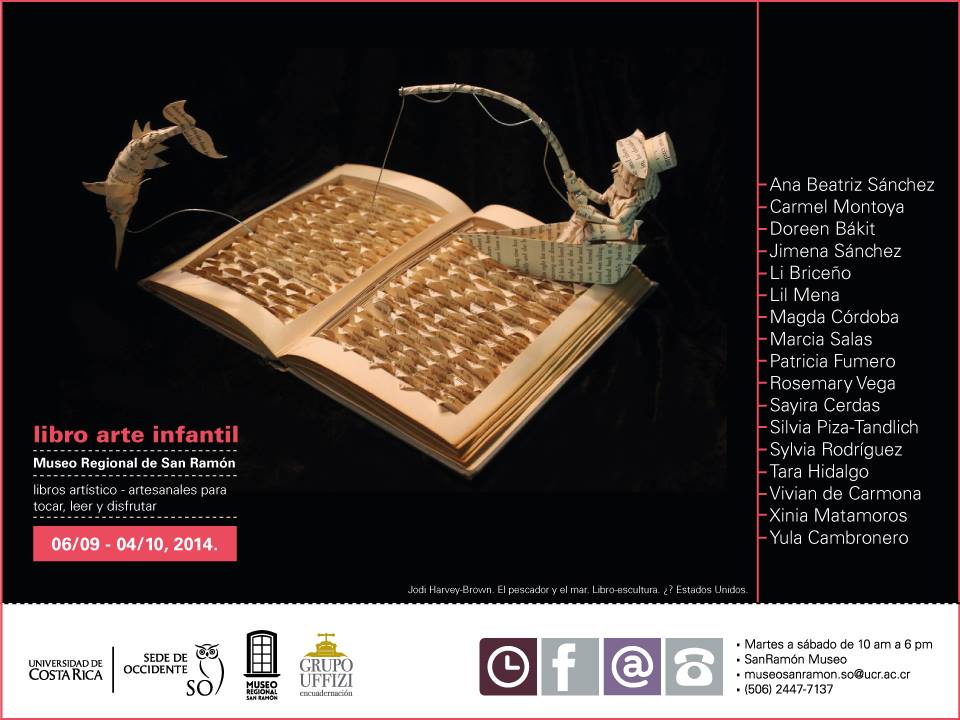
Museo Regional de San Ramón
Universidad de Costa Rica – Sede Regional de Occidente
setiembre 2014
http://www.so.ucr.ac.cr/galeria-museo-regional-san-ramon
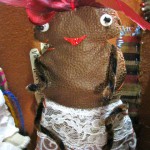
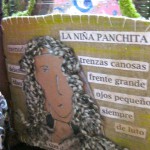
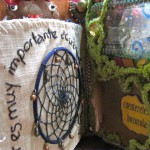
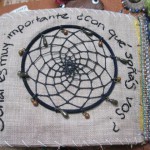
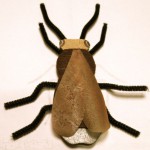
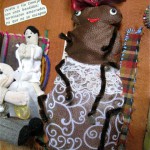
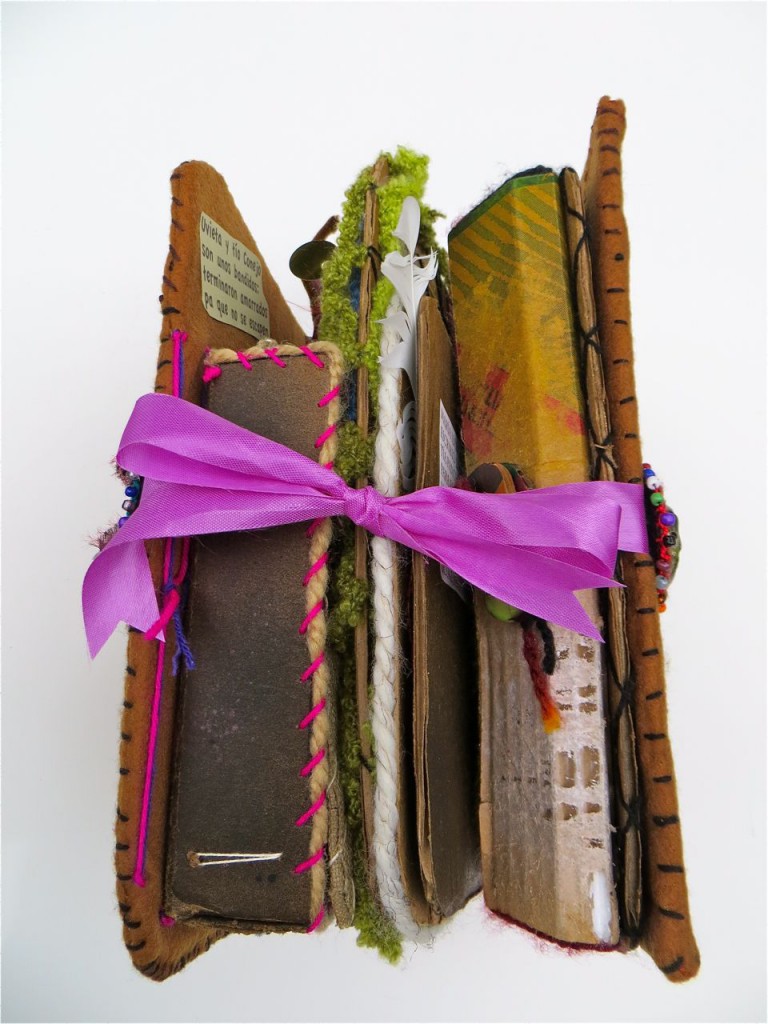
Costa Rican artists in CONTEXTILE 2014
Within world events related to textile art, biennial shows normally introduce new tendencies and techniques to this vanguard art and, thus, choosing participants is done by way of a strict qualifying jury. Although it is regrettable that many biennials have had to permanently shut their doors due to lack of funds and political apathy for artistic and cultural events, the second edition of CONTEXTILE in Guimaraes, Portugal started this month with the city municipal promise to support all side activities surrounding the main international show.
Therefore, from 26 July through 11 October, Costa Rica will be one of the participating countries in CONTEXTILE 2014, with the presence of two artists: Alessandra Sequeira and Silvia Piza-Tandlich.
Sequeira is a visual artist and participates with her new passion: Hand painted silk, representing a first success within fierce competition since she is one of the 50 artists who were chosen out of several hundred proposals.
By contrast, Silvia Piza-Tandlich has ample biennial and exposition experience throughout the world, including the 14th Lodz Triennial of Tapestry in Poland last year.
CONTEXTILE stands out by its proposed interaction between artists, creators, industry, community, and the city of Guimaraes, which intends to strengthen the economy through innovation, creativity and appreciation of the textile identities of participating territories. Within the frame of this biennale’s social character, Silvia Piza-Tandlich offers artwork that is interactive with the public: “Bastion of Wisdom” is a double-sided piece showing hand embroidered proverbs in nine languages. She explains that refrains and proverbs exist in all cultures and become popular wisdom, with homologous concepts from language to language. The piece also has metal from tee-light candles, representing the whimsical human culture of wishing, and knowing.
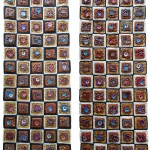
Links:
CONTEXTILE: http://contextile.pt
Silvia Piza-Tandlich: http://galeriaoctagono.com

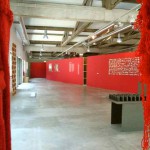
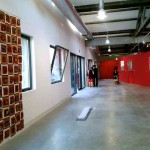
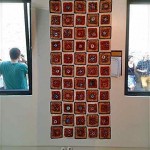
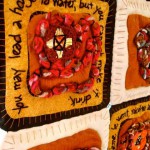
Photos: Magdalena Sobon, Poland
Collares – Necklaces
T428: máscaras – Mask quilt
Cajas para mensajes – Message boxes
Ojos de Dios
THE SPLENDOUR OF TEXTILES – EL ESPLENDOR DE LOS TEXTILES
The Splendour of Textiles – Warsaw, Poland exhibit
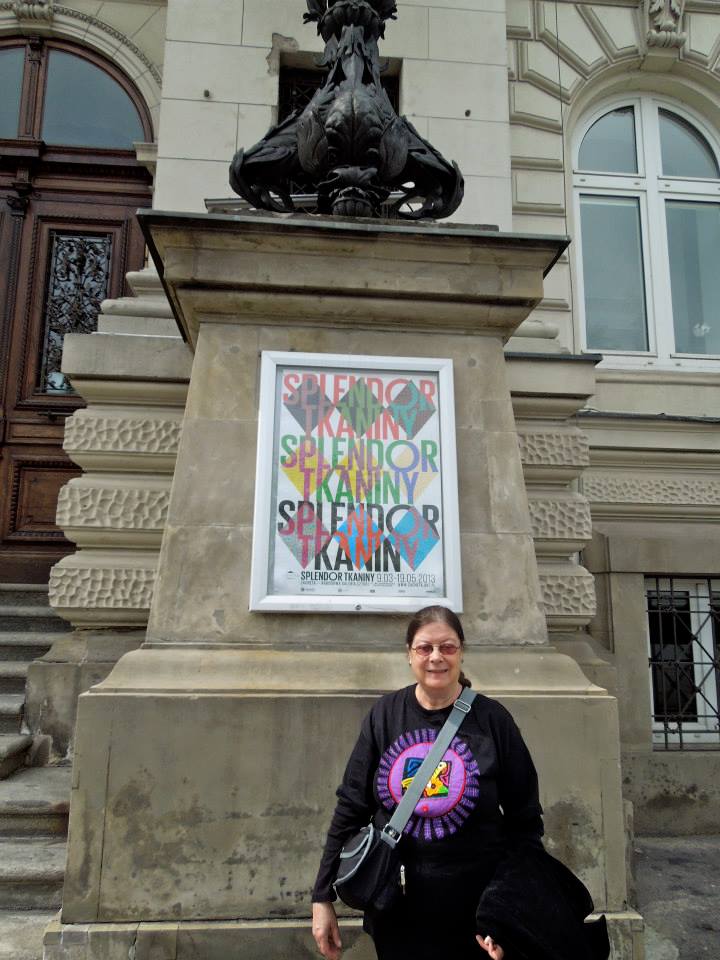
El Esplendor de los textiles – Exhibición en Varsovia, Polonia
The Zacheta National Gallery of Art
March 9 – May 19, 2013
Unique view of 70 years of Polish textile creation.
Vista especial de 70 años de creación del textil de Polonia.
The Splendour of Textiles
—————
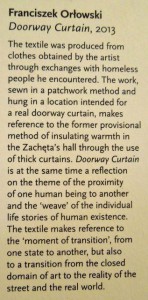 Franciszek Orlowski. “Cortina para umbral”, 2013.
Franciszek Orlowski. “Cortina para umbral”, 2013.
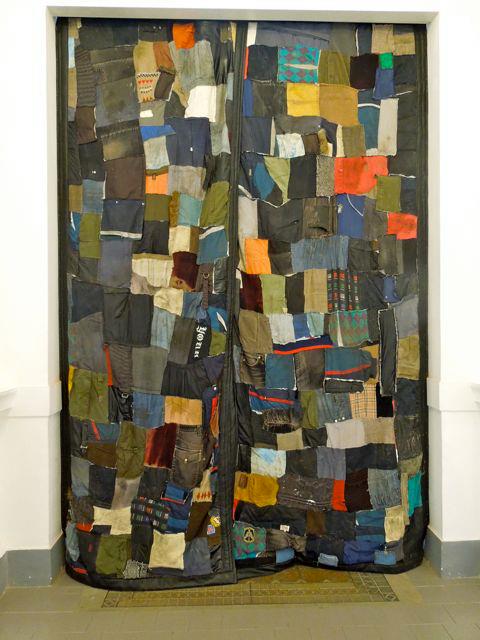
Esta pieza fue producida con prendas obtenidas por el artista en sus intercambios con indigentes. La obra, cosida al estilo patchwork y colgada en un lugar donde iría una cortina de verdad, hace referencia al antiguo método provisional de retener el calor del vestíbulo del Zacheta gracias al uso de gruesas cortinas. “Cortina para umbral” es, al mismo tiempo, una reflexión sobre el tema de la proximidad de un ser humano con otro, y la ‘tela’ de las historias de vida de cada quien en su existencia humana.
La obra hace referencia al ‘momento de transición’ de un estado a otro, pero también se refiere a la transición entre el dominio cerrado en el arte, y la realidad de la calle y el mundo real.
Doorway Curtain
—————
“El esplendor de los textiles”: espléndido precedente
En el año 2013, Polonia se convierte en escenario de decenas de actividades textiles, en su mayoría asociadas a la XIV Trienal Internacional del Tapiz en la ciudad de Lodz, a la vez que otras exhibiciones independientes aprovechan la prevalente atmósfera textil, para dejar su propia huella. De marzo a mediados de mayo, se presentó en Varsovia “El esplendor de los textiles”, el cual resalta como un nuevo punto de referencia, no sólo por ser una retrospectiva del arte textil polaco de los últimos 70 años, sino porque su abordaje museográfico permitió un mayor acercamiento y entendimiento de lo que se esperaba que el público fuera a sentir. Esta exhibición también representa las tribulaciones y los logros de los creadores textiles en Polonia: un vínculo palpable y que a la vez, llega al corazón.
La presentación se llevó a cabo en la Galería y Museo Nacional de Arte Zacheta (abreviado: el Zacheta, una las más notables instituciones de arte contemporáneo de Polonia), para que tuviera una cierta prestancia y estatura ante el público y con afán de poder incorporarse el arte textil en los movimientos Artista-Artesano del presente, además de servir como modelo para que otros museos y galerías importantes incluyan textiles en sus programas de actividades.
Varsovia es una ciudad donde la población puede sumergirse en eventos históricos y culturales, disfrutando también del verdor y belleza de más de 80 parques y áreas recreativas, cada una con sus palacios y monumentos a personalidades del pasado y presente. Pero para mí, llegar el 3 de Mayo (Celebración de la Constitución), me permitió observar desfiles y actos ceremoniales los cuales, sumados a un largo tour por los barrios históricos de la ciudad, me llevaron por los anales de décadas de opresiva persecución y me trajeron de vuelta a la perspectiva del arte textil en Polonia.
Siendo el arte una expresión del alma, es natural tener la expectativa de que una gran chispa de creatividad saldrá de toda la turbulencia producida por constantes invasiones, el Ghetto y Levantamiento de Varsovia, los horribles campos Nazi de concentración y masacre, y la dureza del mandato soviético: prusianos, Nazis, suecos, austríacos, húngaros, turcos, soviéticos… resulta maravilloso que Polonia pudiera ser tan prolífica en todas las manifestaciones de creación artística, a pesar de sólo ser libre y pacífica a partir de la caída de la Unión Soviética en 1991. Muy lamentablemente, sin embargo, cuatro años más tarde, en 1995, la Bienal de Lausana (en Suiza) —responsable de integrar textiles en las expresiones artísticas de la época y también responsable de patrocinar la llamada Escuela polaca de arte textil— dejó de existir y con ello, se redujo el número de vínculos a las principales tendencias artísticas, salones de exhibición y mercados de venta. Recordemos que en muchos lugares, el arte textil ha sufrido un revés en la atención recibida como género artístico, junto con otras formas de arte y cultura que han sido tristemente descuidadas por los gobiernos. Dicho interés disminuido, en lo textil afectó a Polonia lo mismo que al resto del mundo, combinándose con la reciente crisis económica mundial.
“El esplendor de los textiles” es una magnífica recopilación de obras polonesas que datan desde muy antaño, pero también incluye expresiones contemporáneas de “comportamiento a lo textil”. Ya que nunca tuve el placer de asistir a las ediciones de la Bienal Internacional de Arte Textil de Lausana, donde originalmente se presentaron las famosas obras polacas, el esplendor de los textiles ante mis ojos parecía una alucinación.
“¡No tengo palabras para describirlo!” “¡He aquí la más prestigiosa galería de arte de Polonia, mostrando lo más prestigioso del arte textil de los años de gloria, además de obras que podrían ser consideradas…la Escuela polaca de arte textil de hoy en día!”.
La exposición llenó los ocho salones del Zacheta y en uno estaba la versión actual de la instalación y performance “Madre Tierra Hermana Luna” de Joanna Malinowska y Christian Tomaszewski, mostrando, descuartizado, un gigantesco traje espacial (modelo tomado del traje de la cosmonauta soviética Valentina Tereshkova). La obra hace referencia a la carrera espacial de los años de la Guerra Fría entre el Este y el Oeste. Diseños futuristas de la moda acompañaron esta obra, la cual a veces parece un poco anticuada, siempre y cuando no pensemos en las explosiones del Challenger y del Columbia, entre otros desastres espaciales.
Por supuesto, disfruté viendo la colección de tapices de los siglos XVII al XIX, seguidos de aquellos tapices “clásicos” de las décadas de 1960 y 70. Textiles poderosos, industriales y políticos, a la par de algunos menos comedidos, provenientes de la Era Popular de Polonia, incluían vastas ilustraciones de arte folklórico e insignias de guerra. Más que un estricto recuento cronológico del textil de Polonia, el curador de la muestra, Michal Jachula explica: “…[la exhibición] demuestra el potencial ideo-lógico y semántico de las telas de arte, agrupando muchas obras que plasman un mensaje claro, ya sea histórico, de propaganda, crítica, o religioso, o patriótico…”
Observé contrastes interesantes entre textiles y “obras comportadas como un textil”. Por ejemplo, el vídeo “Trapos del convento” (1988) mostraba a la artista Teresa Murak, limpiando el piso del convento mientras, a pocos metros de distancia, los trapos eran exhibidos en urnas de plexiglás. En el mismo salón, el filme “Spycifestum 2010” de Kobas Laksa, mostraba la preparación de una alfombra de flores para la tradicional celebración de Corpus Domini, cuya inscripción “¡Señor, sálvanos! ¡Nos ahogamos!” se escuchaba en Polonia durante las luchas de independencia.
Pero en mi opinión, la más poderosa declaración de curaduría es, tal vez, la menos detectada por los visitantes de Occidente, puesto que el catálogo fue publicado en polaco. En el mismo, la artista Marta Kowalewska declara: “…Cabe mencionar una corriente que se ha venido manifestando cada vez más en el ámbito internacional. Los artistas del siglo XXI están recurriendo a una interpretación más amplia de la artesanía. Podemos observar un regreso a los viejos métodos artesanados, aplicados a todo tipo de expresiones artísticas. Se da un diálogo de artesanías y surge un nuevo mensaje. Pero a la vez, los escépticos ponen en duda el renacimiento de la popularidad del arte textil (lo cual llama a atenta reflexión), en un mundo que persigue tiempo que se escapa, donde sucede un intercambio inmediato de información. Por otro lado, no debemos subestimar la disciplina de los procesos creativos de siempre, vistos como un antídoto a la comercialización, la superficialidad y la mediocridad…”
“El esplendor de los textiles” fue espléndido en el número y calidad de las obras, lo cual era de esperarse. Además, puesto que el valor histórico de las piezas merecía claridad de identificación en forma de fichas de pared como las de los museos, para les rindiera a los visitantes bastante información histórica y de curaduría, la Galería, a propósito o sin darse cuenta, logró acercarse a su público. Tal es por ejemplo, la “Alfombra entrelazada” de Julita Wójcik, la cual fue hecha in situ por 24 voluntarios. El vídeo resultante de esta actividad me hizo ver la importancia de demostrarle al público algo tan básico como lo es el funcionamiento de un telar, incluso en un país tan textil como lo es Polonia. Yo apruebo este abordaje para ofrecer información y aumentar la capacidad de atención de aquellos observadores que no están familiarizados con el textil.
En general una experiencia maravillosa, El esplendor de los textiles sienta precedente en tratar de integrar textiles en el mundo de arte, tal como lo hizo la Bienal de Lausana. Sería fabuloso si otros museos y galerías de reconocido prestigio, tomaran la iniciativa de montar una muestra como ésta. Después de todo, los movimientos Arte-Artesanía del momento no deberían distinguir entre “arte” y “arte textil”, como tampoco el textil debe sucumbir en este mundo plagado de crisis financieras.
—Silvia Piza-Tandlich
“The Splendour of Textiles”: Splendid precedent
In 2013, Poland became the stage for dozens of textile art activities, most of them associated with the 14th International Triennial of Tapestry in Lodz, while other independent shows also took advantage of the textile atmosphere already prevalent, to make their mark. Presented from March to mid-May in Warsaw, “The Splendour of Textiles” stands out as an independent landmark exhibit not only for being a Polish retrospect of the past 70 years, but also for its display approach that allowed a better rapport and understanding of what the audience should be expected to experience. This exhibit is, also, representative of the struggles and accomplishments of textile creators in Poland, thereby becoming a very luring thread to touch and be touched by. Staging the exhibit at The Zacheta National Gallery of Art (short: Zacheta, one of Poland’s most notable institutions for contemporary art), ensured a certain prestance and status before the public, while inserting textile art in the Arts and Crafts movements of today, and serving as a model to other leading museums and galleries to incorporate textiles into their regular programs.
Warsaw is a city where its population can immerse in history and cultural events, while enjoying the greenery and beauty of more than 80 parks and recreational areas—each with palaces and monuments honoring personalities of present and past. For me, however, arriving on May 3rd (Constitution Day), allowed me the opportunity to witness parades and ceremonial acts which, together with a long city tour into historic and quaint parts of town, walked me through the annals of decades of oppressive persecution and unrest, and brought me back to Polish textile perspective.
With art being an expression of the soul, it is only natural to expect a big spark of creativity stemming from all the turmoil of constant invasions, the Warsaw Ghetto and Uprising, the horrible Nazi concentration and massacre camps, and the duress of the Soviet mandate: Prussians, Nazis, Swedes, Austrians, Hungarians, Turks, Soviets… it is wonderful that Poland could be so prolific in all matters of artistic creation despite only having peace and freedom since the fall of the USSR in 1991. Quite unfortunately, however, four years later in 1995, the Lausanne Biennale—responsible for integrating textiles into contemporary artistic expressions, and also responsible for bringing us the so-called Polish school of textile art—ceased to exist, thereby reducing textile links to mainstream art trends, venues, and markets. Bear in mind that in many places, textile art has recently suffered a setback as far as the attention received as an art genre, along with all forms of art and culture being sadly neglected by governments. This lessened interest in textiles affected Poland as well as the rest of the world, combined with the world economic crisis of late.
The Splendour of Textiles is a magnificent compilation of Polish works dating from way back, and including “textile-behaving” contemporary expressions. Not having had the pleasure to attend any of the Lausanne International Textile Art Biennale shows where the famous Polish works were originally presented, the splendor of textiles before my eyes seemed to be a hallucination! “There are no words to describe it!” “Here is the most prestigious gallery of art in Poland, showing the most prestigious examples of textile art from the glorious days, plus what could now be considered…the School of Polish textile art of today!”
The exhibit occupied all eight halls of the Zach?ta Gallery, hosting also a current version of the installation and performance, “Mother Earth Sister Moon” by Joanna Malinowska and Christian Tomaszewski, which shows a huge dismembered spacesuit modeled after Soviet cosmonaut Valentina Tereshkova’s, and alluding to the Cold War space race between the East and the West. Futuristic fashion designs accompanied this show, which, of course, feels a bit outdated if we don’t think of the Challenger and Columbia explosions, and other space disasters.
Needless to say, I so enjoyed being able to see the collection of tapestries from the 17th to the 19th century, followed by those “classic” Polish tapestries of the 1960’s and 70’s. The powerful, industrial and political textiles, and the less restrained People’s Poland Era next door included vast illustrations of folk art as well as war insignias. Rather than being a strict chronological account of Polish textiles, curator Micha? Jachu?a explains, “…[the exhibit] demonstrates the ideological and semantic potential of art fabrics, bringing together many works that convey a clear message, be it historical, propaganda, critical, religious, or patriotic…”
Interesting contrasts between textiles and “textile behaving” works were seen throughout the show, as well as “references to textiles”. For example, Teresa Murak’s video, “Nunnery Rags” (1988) showed the artist cleaning the floor of a nunnery while a few yards away the rags were displayed in plexiglas cases. In the same room, the film “Spycifestum 2010” by Kobas Laksa, showed the community preparation of a flower carpet for the traditional celebration of Corpus Domini, bearing the inscription “Lord, save us: we’re going to drown!” heard often during Poland’s independence struggles.
But in my opinion, the most powerful curatorial statement was perhaps, the least detected by Western visitors since the catalog was published in Polish. In the catalog, artist Marta Kowalewska states, “… It is in order to mention a current that has been increasingly present recently on an international arena. Artists of the 21st century turn more and more to broadly construed crafts. We can observe a return to old methods of craftsmanship applied in all kinds of artistic expression. A dialogue of crafts and a modern message is born. On the other hand, skeptics cast into doubt the rebirth of popularity of textile art (which calls for focused reflection), in a world that chases flying time, where an immediate exchange of information takes place. On the other hand, we should not underrate the discipline of long-lasting creative processes seen as an antidote for commercialization, superficiality and mediocrity…”
The Splendour of Textiles was quite splendid in the number and quality of works, which was expected. In addition, since the historic value of the pieces deserved clear identification in the form of museum-like wall plaques offering visitors a lot of historic and curatorial information, the Gallery, purposely or inadvertently managed to be more in touch with its audience—not excluding a live demonstration of Julita Wójcik’s “Braided rug”, made on site by 24 volunteers. The resulting video of this activity made me realize the importance of demonstrating to the general public basic things such as how a loom operates, even in a highly textile country such as Poland. I strongly approve of this approach to offer information and increase the attention span of viewers who may not be familiarized with textiles.
All in all a wonderful experience, The Splendour of Textiles sets precedence in trying to reintegrate textiles into the world of art—the way the Lausanne Biennale did it. It would be great if other prestigious galleries and museums were to take initiative and put together a similar show. After all, the current Artist-Artisan movements should stop making the distinction between “art” and “textile art”, and textiles should not succumb in a world plagued by financial crises.
—Silvia Piza-Tandlich

